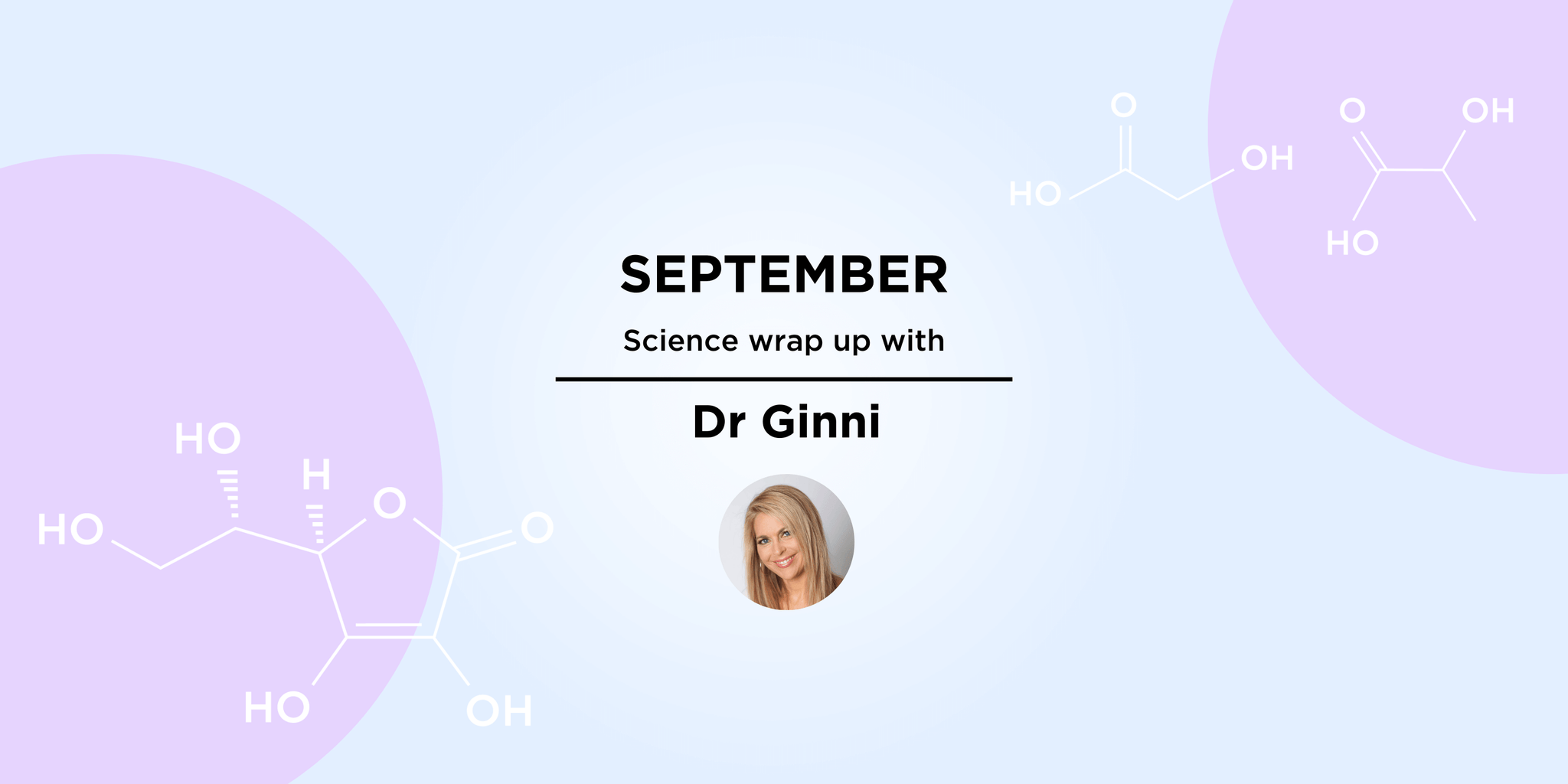
Science Hub
September Science Wrap 2023
30 September 2023
Dr Ginni Mansberg
Hello fellow skintellectuals!
September has been huge for ESK with our latest launch, Complexion Correction leading this month’s list of activities. We started with a media launch where long time ESK friend, the gorgeous Monique Wright (host of Weekend Sunrise) and I discussed all things pigmentation and dissolving microneedles.
We followed that up with another fab community launch part in Penrith. Thanks to everyone who reached out asking for us to hold an event in Sydney’s west- you were spot on.
The ESK team sure knows how to throw a party and with champagne, cocktails and killer views, this one was a cracker.
But it’s not all parties, champagne and skittles! Nothing can tear me away from my beloved science journals!
Here are this month’s offerings!
Melasma in men- a hormonal problem?
Melasma is a hyperpigmentation disorder that appears in sun exposed skin. Although we think of this as a women’s condition, it actually affects men as well. And according to a new small study in the Pan African Medical Journal, testosterone could be to blame.
The 30 men in the study, average age 43 had a melasma score given to them along with blood tests for testosterone levels. The findings were extraordinary. The mean testosterone level in those who had melasma was 7.55. This is a LOT lower than the testosterone levels in men without melasma (21.07). The authors calculated that if a man has a testosterone level < 8.92 nmol/L had 5.29 times higher risk of melasma than men with higher testosterone. It’s not the first study to find this link, but it is worth remembering that it’s not only women who get hormonal skin!
The latest in allergic contact dermatitis
Associate Professor Rosemary Nixon AM addressed the Annual Scientific Meeting of the Australasian College of Dermatologists in Sydney discussing the findings of a study where she and her team performed allergen patch testing on thousands of patients to find the biggest culprits. Fragrances, nickel, the preservatives methylchloroisothiazolinone and methylisothiazolinone (MCI/MI), potassium dichromate and 4-phenylenediamine base (PPD, also known as permanent hair dye) were the most common allergens.
Other common allergens include fragrances like hydroperoxides of limonene, hydroperoxides of linalool, fragrance mix I and II and Balsam of Peru. So, perfumes, scented skincare products, shampoos, hand washes and essential oils (including those added to diffusers) were major culprits But, getting the patch testing you need to wait ages for an allergist- and it can be expensive. To address this, from November this, the Occupational Dermatology Research and Education Centre team at the Skin Health Institute in Victoria have developed a new course – the Patch Test Certificate to help more health care professionals diagnose your skin allergies. If you react to skincare, shampoo etc, help might soon be at hand.
Should you be DIY-ing your skincare?
A new French study published in the International Journal of Cosmetic Science, looked at 150 beauty bloggers who advocate for DIY skin and haircare. These bloggers argued for the benefits of homemade cosmetic recipes are because of ecological concerns. The second reason was concerns about the ingredients used in commercial products- fearing toxicity and cancer. The authors pointed to “abundant scientific falsehoods” about, for example, preservatives like parabens and phenoxyethanol. So do these self-proclaimed experts even know what they’re talking about? Not so much! The authors found that only 6% of their bloggers had any knowledge of cosmetology. “The situation is an illustration of the Dunning-Kruger effect, with authors believing themselves to be qualified in a field wholly outside their own,” the researchers said. The authors criticism didn’t stop there; “in the majority of cases, the blogs studied constitute showcases for a remunerative activity.” They were selling products, books or had affiliate codes so that they were getting a kickback from sales.
Back to what we know works…..
Shop Complexion Correction
Complexion Correction Patches are designed to support the appearance of a more even-looking skin tone, including areas with visible dark spots or pigmentation. Each patch contains 2,000 tiny dissolving hyaluronic acid microneedles infused with 4-n-Butylresorcinol, Retinal, Niacinamide, Green Tea Extract, Resveratrol, and Ferulic Acid. These microneedles gently deliver ingredients to where they work best helping with the appearance of a smoother, refreshed, and more uniform skin tone over time.
Complexion Correction: Microneedle Patches
Featuring:
- Painless 0.3mm dissolving microneedles for targeted application
- Ingredients to support a more even-looking skin tone
- Gentle, easy-to-use patches for home application
- Not suitable for use while pregnant or trying to conceive

